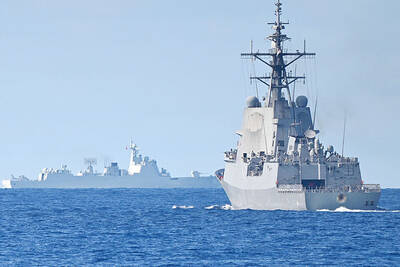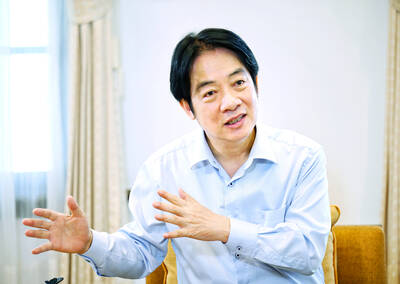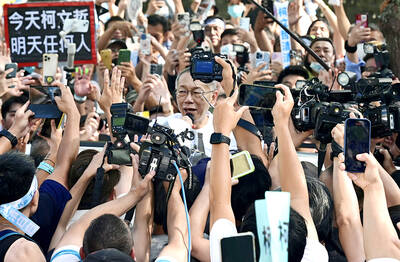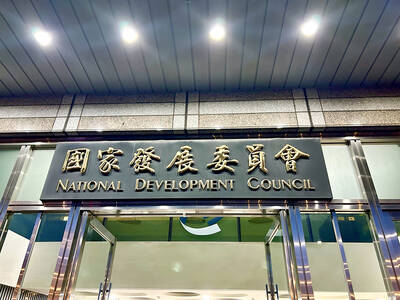The US is closely watching the anticipated test-firing of China’s new conventionally armed strategic missile, said to be capable of hitting US aircraft carriers and other warships at sea, an article in Thursday’s Washington Times said.
The report, quoting a defense intelligence official, said the exact timing of the test-fire and plans for deployment of the precision-guided CSS-5 medium-range missile is not known. But Washington is said to be extremely concerned about the move, as Chinese capability to hit US carriers would throw into doubt US plans to defend Taiwan in the event of a cross-strait conflict, which would involve rushing US aircraft carrier strike groups to the region, the report said.
Carrier-killing missiles would help Beijing block the rapid deployment of US forces to the region, the newspaper said.
Richard Fisher, a specialist on China’s military at the International Assessment and Strategy Center, was quoted as saying that China was likely developing three types of anti-ship ballistic missiles.
“It is bad enough that these missiles are being developed and can soon target US naval forces from China,” Fisher told the newspaper. “But we should also expect that China will eventually place these missiles on ships and submarines and sell them to its rogue allies.”
The report said Chinese Internet photos of the CSS-5, also known as the Dong Feng-21, showed what looks like a maneuvering warhead similar in design to warheads used on the US’ Pershing-2 missiles.
Fisher told the Washington Times that the new Chinese anti-ship missile could use a combination of active radar and optical or infrared guidance, but added that US Navy missile defense interceptors could also be upgraded to counter the new Chinese carrier killers.

RESPONSE: The transit sends a message that China’s alignment with other countries would not deter the West from defending freedom of navigation, an academic said Canadian frigate the Ville de Quebec and Australian guided-missile destroyer the Brisbane transited the Taiwan Strait yesterday morning, the first time the two nations have conducted a joint freedom of navigation operation. The Canadian and Australian militaries did not immediately respond to requests for comment. The Ministry of National Defense declined to confirm the passage, saying only that Taiwan’s armed forces had deployed surveillance and reconnaissance assets, along with warships and combat aircraft, to safeguard security across the Strait. The two vessels were observed transiting northward along the eastern side of the Taiwan Strait’s median line, with Japan being their most likely destination,

GLOBAL ISSUE: If China annexes Taiwan, ‘it will not stop its expansion there, as it only becomes stronger and has more force to expand further,’ the president said China’s military and diplomatic expansion is not a sole issue for Taiwan, but one that risks world peace, President William Lai (賴清德) said yesterday, adding that Taiwan would stand with the alliance of democratic countries to preserve peace through deterrence. Lai made the remark in an exclusive interview with the Chinese-language Liberty Times (sister paper of the Taipei Times). “China is strategically pushing forward to change the international order,” Lai said, adding that China established the Asia Infrastructure Investment Bank, launched the Belt and Road Initiative, and pushed for yuan internationalization, because it wants to replace the democratic rules-based international

RELEASED: Ko emerged from a courthouse before about 700 supporters, describing his year in custody as a period of ‘suffering’ and vowed to ‘not surrender’ Former Taiwan People’s Party (TPP) chairman Ko Wen-je (柯文哲) was released on NT$70 million (US$2.29 million) bail yesterday, bringing an end to his year-long incommunicado detention as he awaits trial on corruption charges. Under the conditions set by the Taipei District Court on Friday, Ko must remain at a registered address, wear a GPS-enabled ankle monitor and is prohibited from leaving the country. He is also barred from contacting codefendants or witnesses. After Ko’s wife, Peggy Chen (陳佩琪), posted bail, Ko was transported from the Taipei Detention Center to the Taipei District Court at 12:20pm, where he was fitted with the tracking

The National Development Council (NDC) yesterday unveiled details of new regulations that ease restrictions on foreigners working or living in Taiwan, as part of a bid to attract skilled workers from abroad. The regulations, which could go into effect in the first quarter of next year, stem from amendments to the Act for the Recruitment and Employment of Foreign Professionals (外國專業人才延攬及僱用法) passed by lawmakers on Aug. 29. Students categorized as “overseas compatriots” would be allowed to stay and work in Taiwan in the two years after their graduation without obtaining additional permits, doing away with the evaluation process that is currently required,